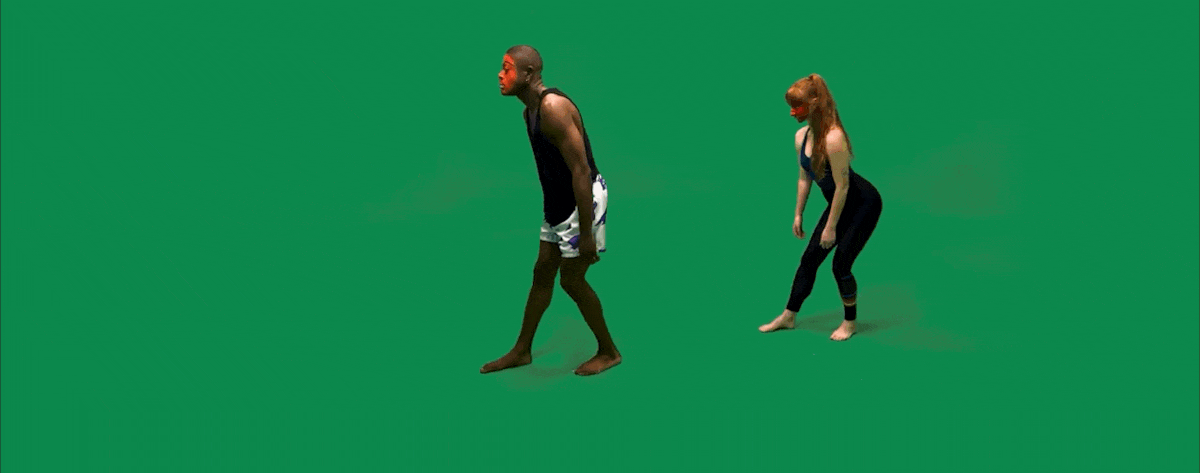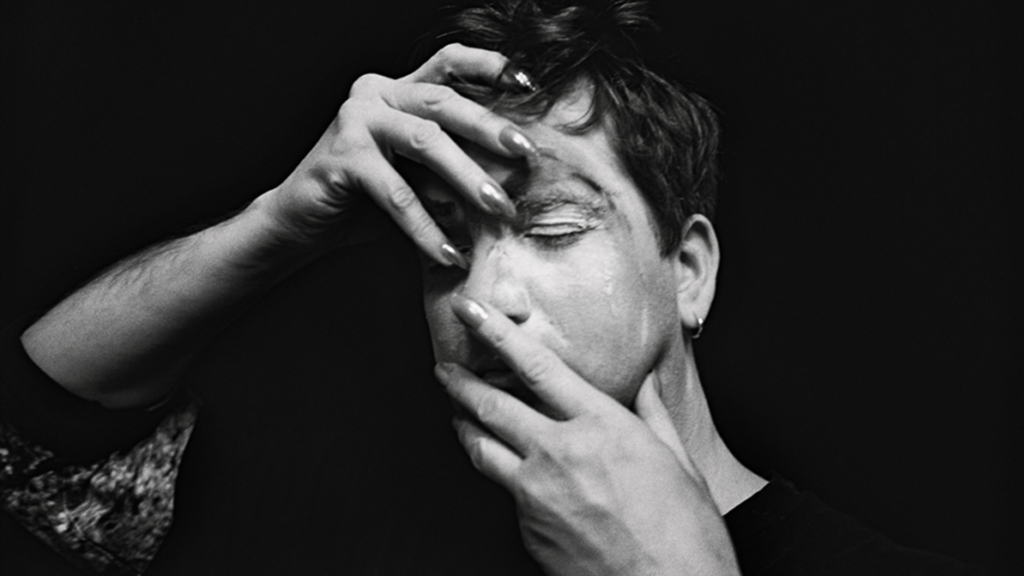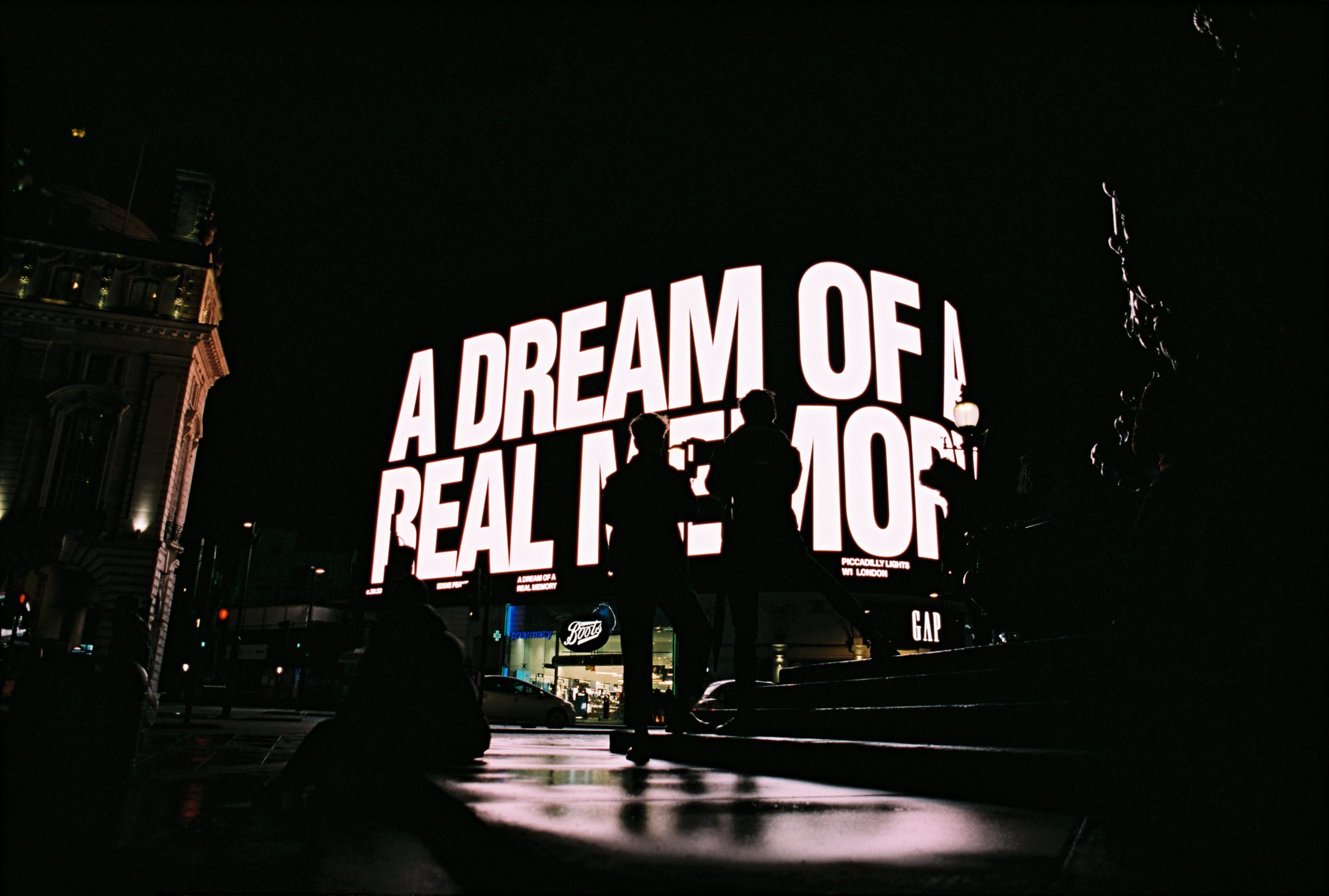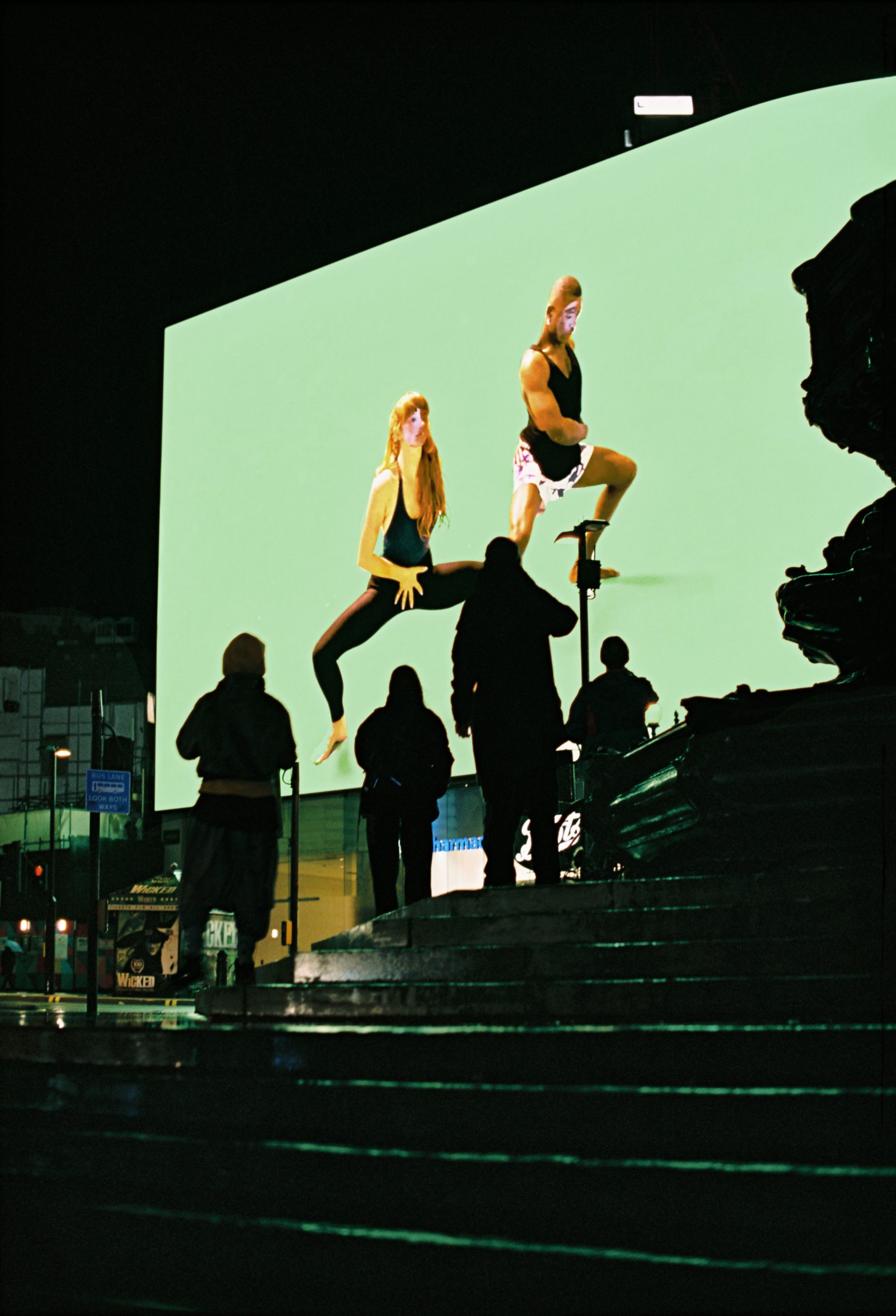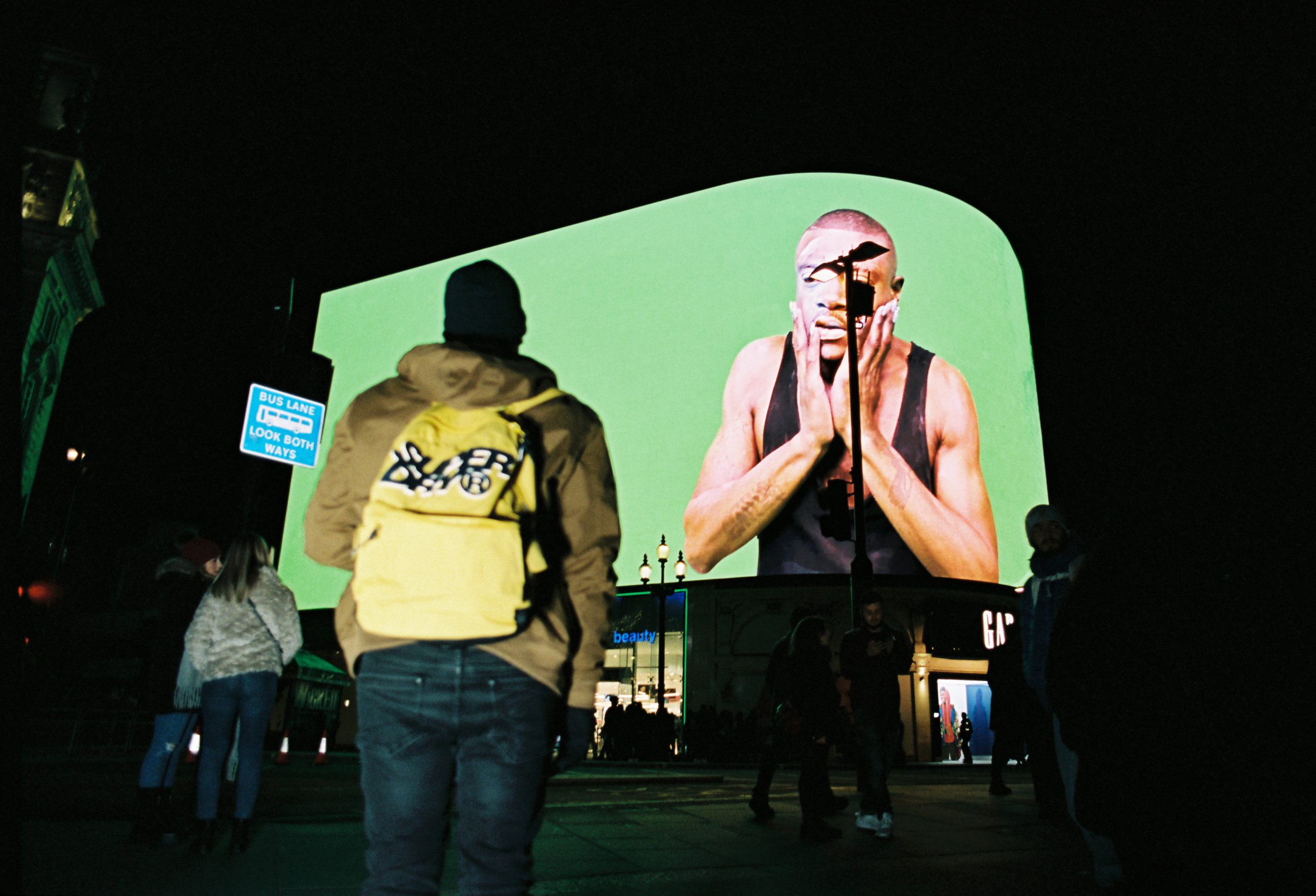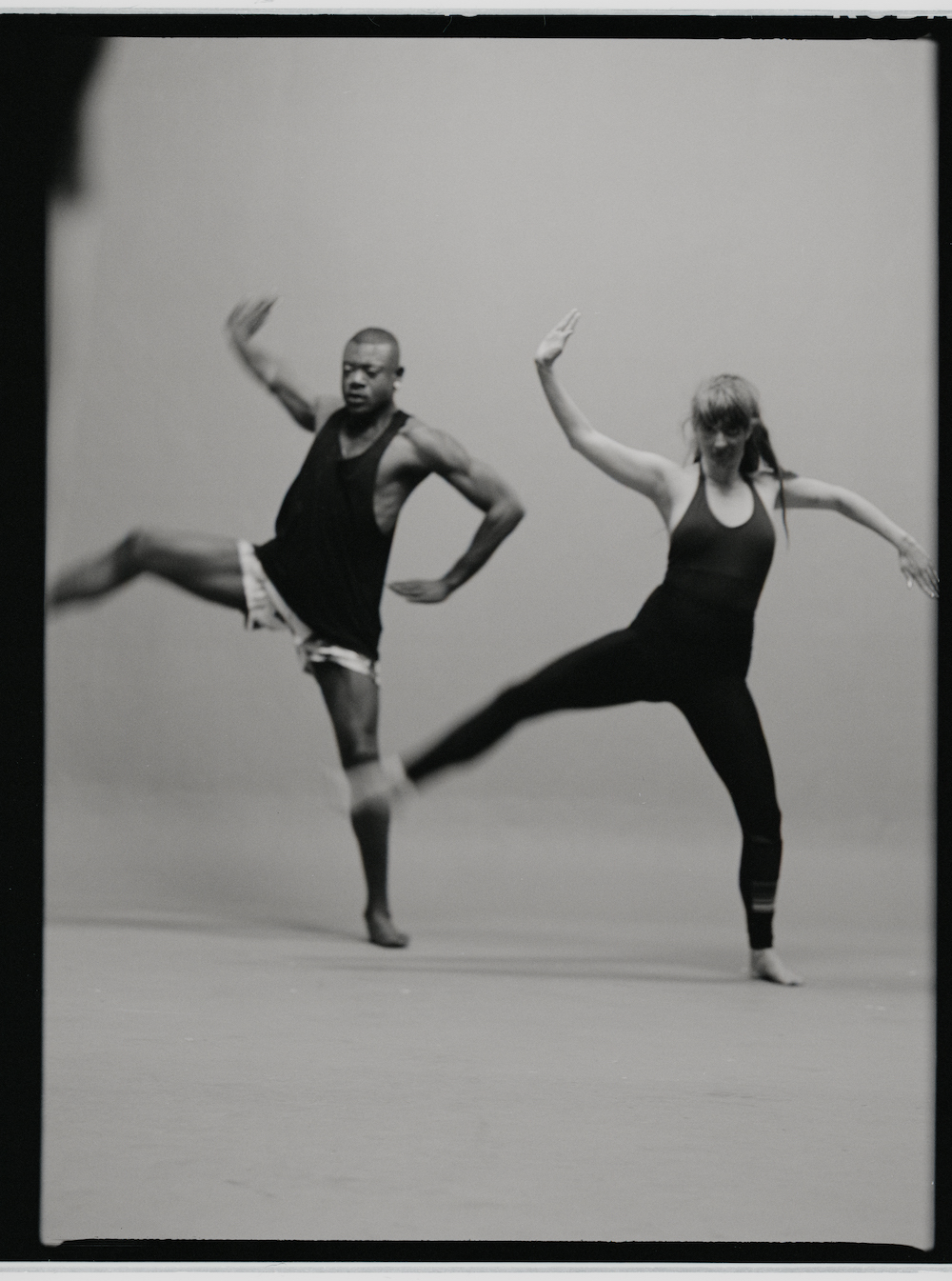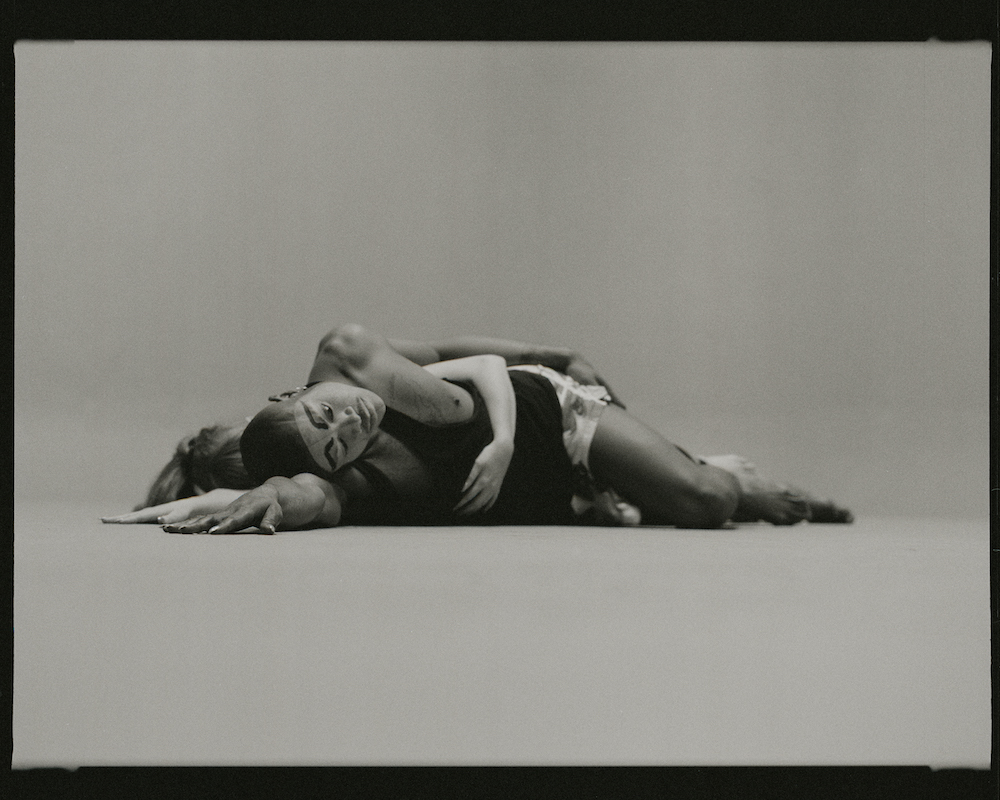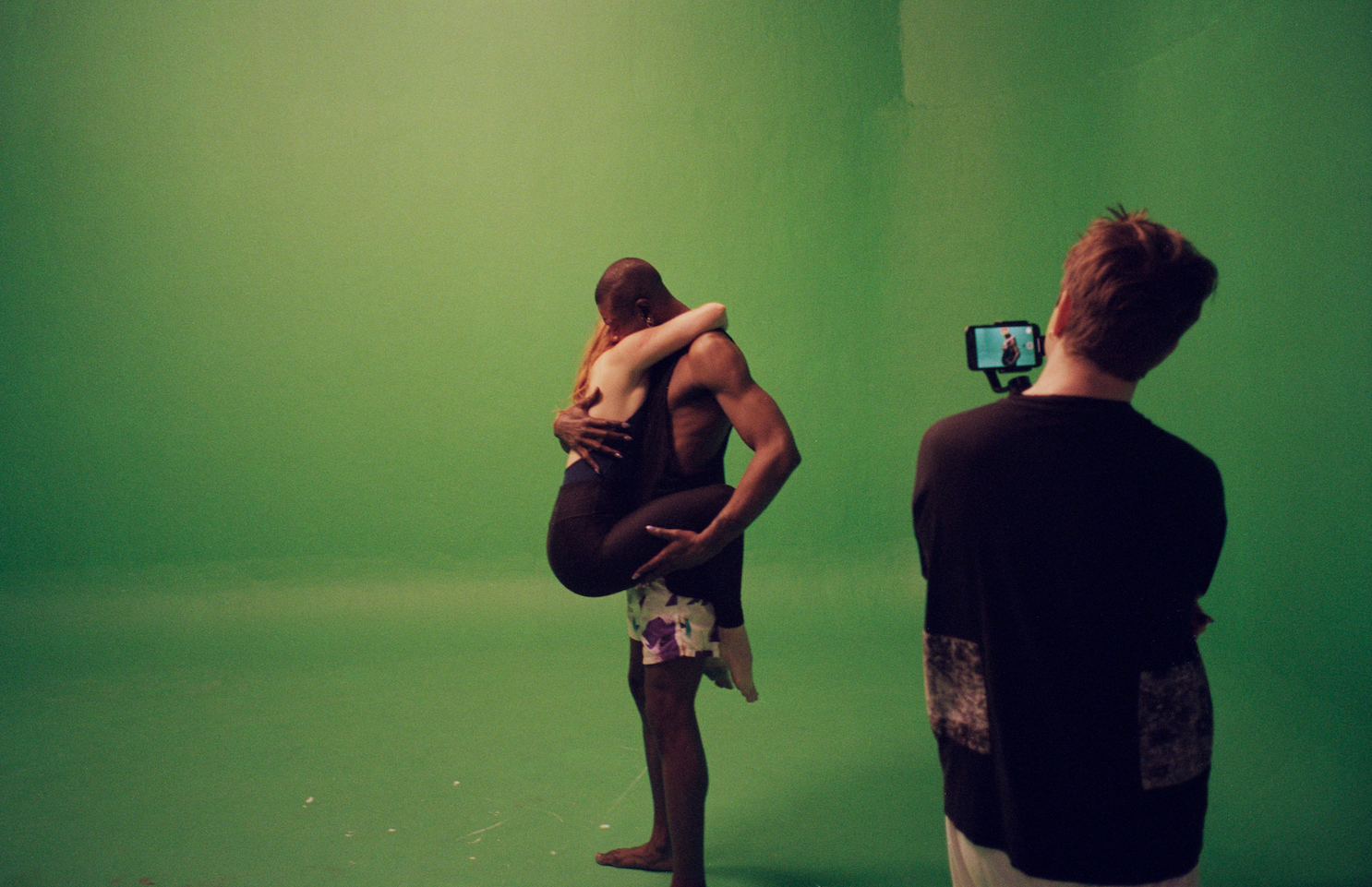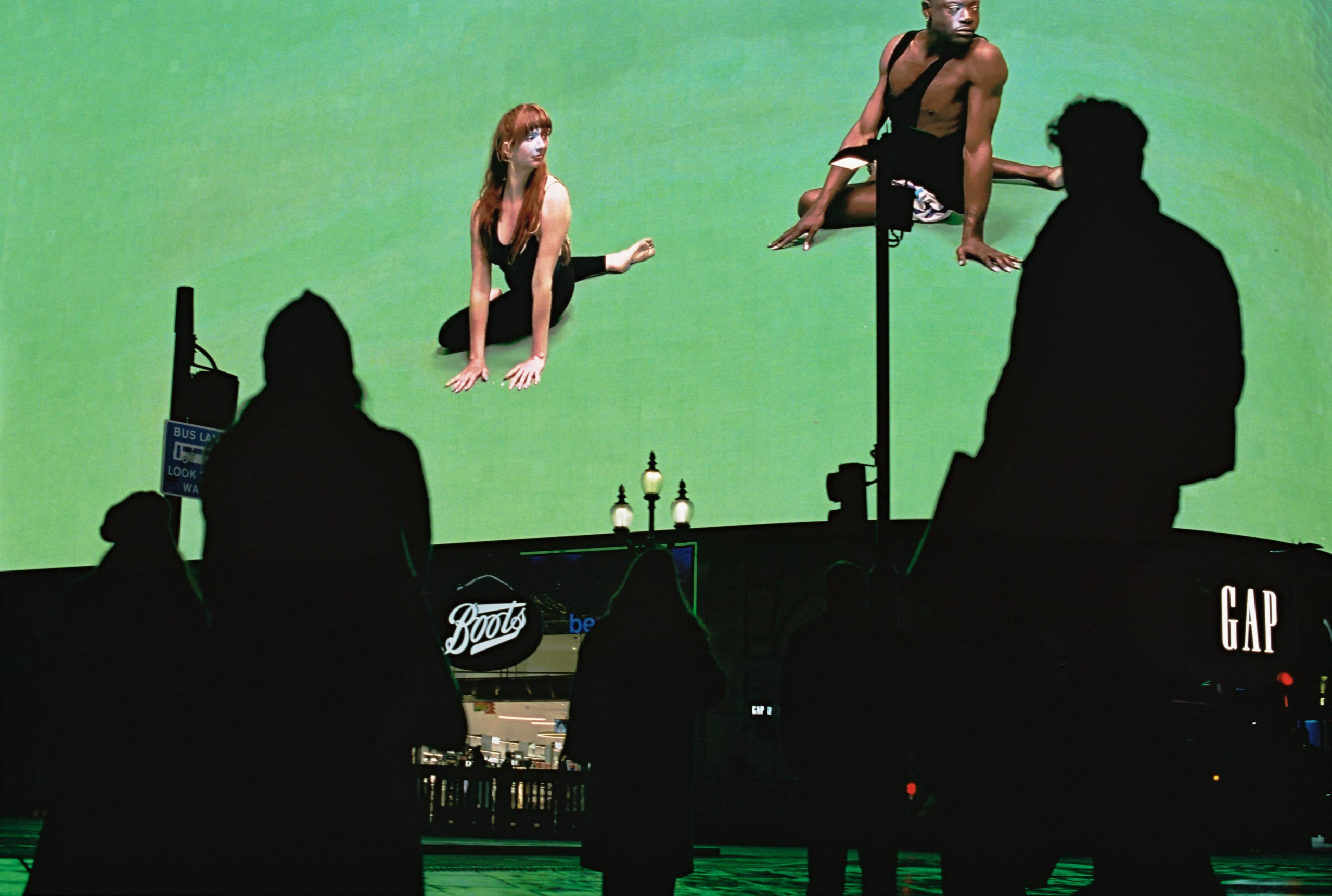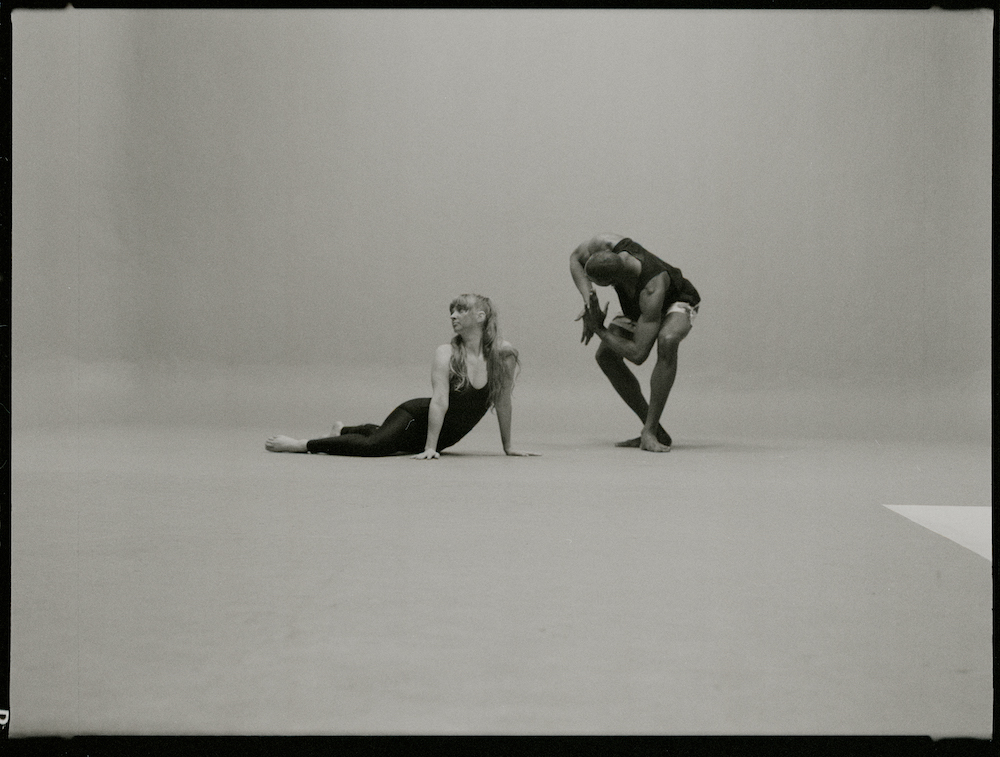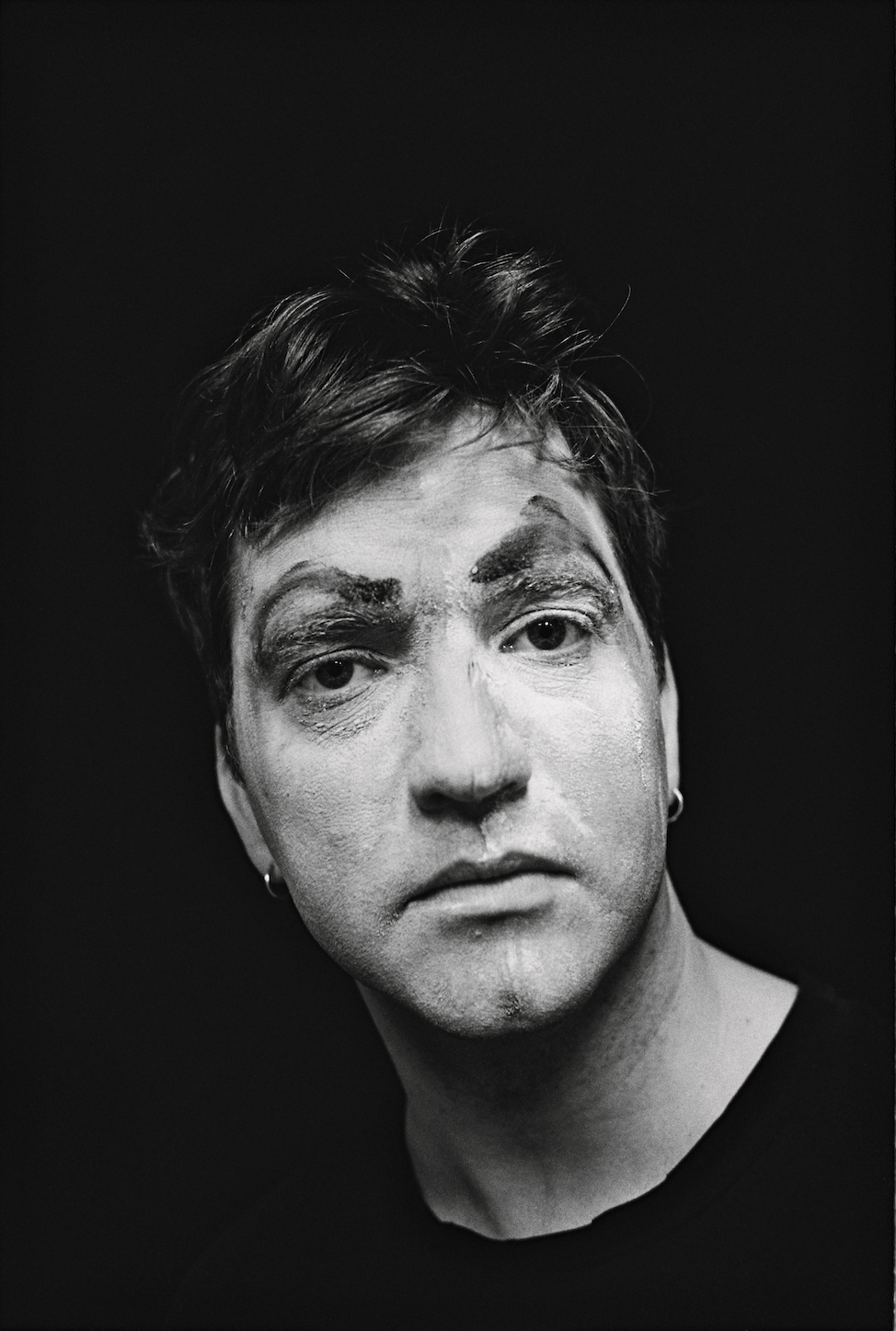Eddie Peake: Rehearsal, Reversal and Carnival
Written by Gertrude Gibbons
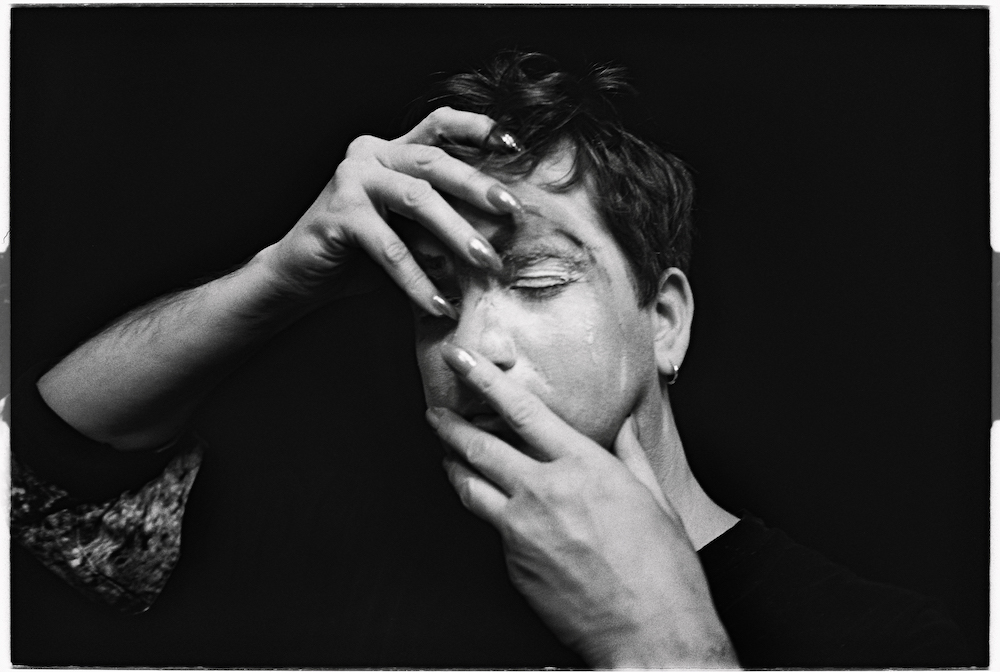
Framed in a space of making, Eddie Peake’s A Dream of a Real Memory appears a rehearsal awaiting future performance. It seems as something not yet finished, anticipating conclusion, solution or closure; yet here at the Piccadilly Lights it is presented as complete in this suspended way. This sense of suspense perhaps draws upon its manner of presentation across thirty-one nights, which means that each episode, fragment of film, is stopped after two minutes, and interrupted by a full night and day, before the next fragment is played. Such interruptions to this seductive screen generally used for advertisement, feels as might sometimes be felt when, waking during a dream, there is an urge to force oneself back into sleep to finish the dream, either simply to continue it, or to solve it; to return to the place the dream left off, and glide over the disruption caused by waking.
